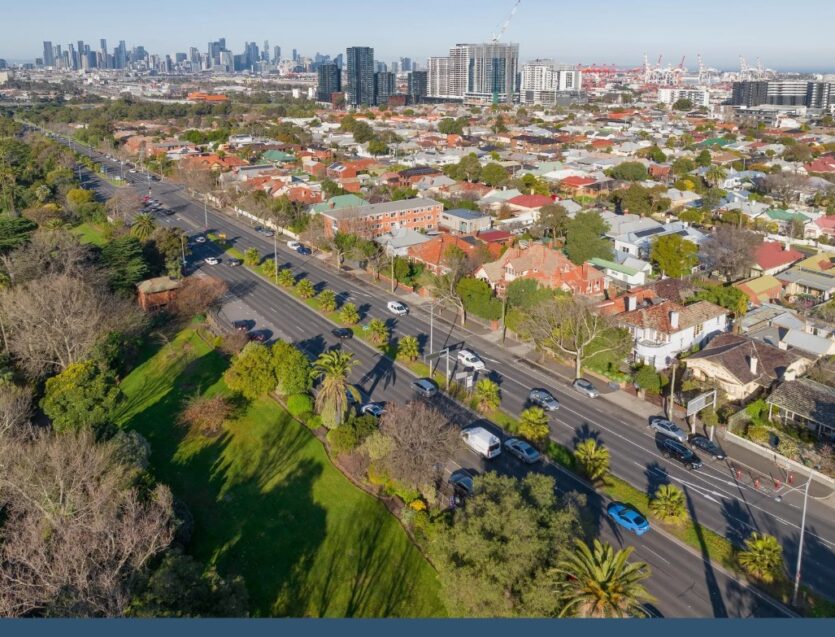By any measure, the Perth property market is red hot but can it maintain this level of rampant price growth?
Brisbane and Adelaide have been the other two capital cities to deliver rapid capital growth over the past couple of years but even they are now in Perth’s rear view mirror.
The range of annual growth across the capital cities stretches from a 22.0 per cent rise in Perth dwelling values, to a -0.1 per cent dip in Hobart.
Across the capital city markets, Perth dwelling values have had the highest uplift in value at 62.6 per cent, ranging to an 11.2 per cent gain across Melbourne.
It is an A-grade shit show.” – Joe White, REIWA President, on Perth’s housing crisis
Perth’s property market has always been closely aligned with the performance of the resources sector and has endured periods of extended flatlining and declining prices throughout the past decade and a half.
The median house price, however, has risen to $650,000, a 32.5 per cent increase on five years ago when WA was at the end of a long downturn.
So can the city perched aside the scenic Swan River maintain its current heady trajectory?
The numbers that matter in property suggest it might, at least until mid-2025. Beyond that, greater forces may come into play.
Sales listings are low, rental vacancy rates sit alongside Adelaide as the lowest in the country and the mining sector shows little sign of slowing down.
Commodity prices have defied predictions they would tank in the wake of a slowdown in the Chinese economy but remained high last month thanks to stronger steel demand and increased capacity utilisation within Australia’s largest trading partner.
The Commonwealth Bank’s latest quarterly economic report on each state and territory shows WA, which has the country’s lowest unemployment rate of 3.6 per cent, is also far ahead on other key metrics like private sector growth and state final demand (a measure of the total value of goods and services sold in a state to buyers).
Perth also has the fastest growing population in the country (3.3 per cent annually) and wages are also making healthy gains, rising to 4.2 per cent above the national average. This wage growth is leading to increased borrowing capacity.

But property investors and those who might be waiting for a property price correction should also be casting a keen eye over the sales listings and rental vacancy rates, both of which offer valuable insight into whether a slowdown is in the pipeline.
As noted by CoreLogic, the driving force behind the three fastest growing capitals’ property markets’ momentum is the low supply of listings relative to sales. The oversupply of the Melbourne market, which has a stagnant property market, is especially prominent when comparing new listings (98,223) added to the market in the past 12 months compared with actual sales (84,452).
Listings in Perth are a staggering 40.5 per cent lower than levels seen a year ago and there’s no sign of that imbalance between supply and demand abating.
Last week’s total figure of properties available for sale is 5.6 per cent lower than four weeks ago, and a house typically takes eight days to sell in Perth, four days faster than a year ago. It is 10 days for a unit, 12 days faster than a year ago.
REIWA CEO Cath Hart said despite the increase in median sale prices, Perth remained relatively affordable, particularly when compared to the Eastern States.
This was proving a source of continued interstate interest in the West.
“WA’s median house sale price is nearly two and a half times more affordable than Sydney at $1,628,000 – with only Darwin more affordable,” she said.
“Perth’s other dwelling median price is now gaining momentum after being flat for some time, as the strong competition for houses pushes more people to consider the options like units, townhouses and apartments to secure a home.

“As a result, the median price for other dwellings has increased 7.0 per cent over the quarter and 15 per cent over the year. Despite this it is also the second lowest in the country,” Ms Hart said.
Nowhere near enough new homes
Compounding the lack of supply that is driving up property prices and, again, showing no signs of changing any time soon, is the lack of new homes being built.
It was a situation that prompted REIWA president Joe White to tell ABC Radio that the shortfall was “an A-grade shit show” while estimating that 30,000 homes needed to be built to keep up with demand when only half that number was being achieved.
“The problem we have in housing, both in total supply and diversity, is that we are simply failing dismally in delivering enough supply to the market to meet the needs,” he said.
Mr White said there was huge need for more medium-density infill of two to three-storied apartment blocks.
Perth’s affluent golden triangle squaring up to red hot outer suburbs
The Perth property market is widely tipped to continue leading the nation in property price growth for the next few years but will that continued growth come from the outer areas or the coveted western suburbs?
Despite the higher wages in WA, two incomes are no longer an assurance of property security.
Median house values in 52 suburbs, mostly in coastal suburbs from Burns Beach to East Fremantle, as well as inner postcodes Inglewood and Willetton, fell out of reach for a couple on average incomes in the past two years to April 2024.
The maximum a couple on an average combined income of $196,436, can now afford to spend is $1,075,000, assuming a 20 per cent deposit of $215,000. Buyers also need an average of $46,478 for stamp duty fees.
And those families and others forced into renting are finding no reprieve nor signs of things turning around soon.
Perth has emerged as one of the worst cities in the developed world to find a home to rent, with the vacancy rate at, from a renter’s perspective, a deplorably grim 0.4 per cent.
Rising rental yields are only serving to attract more investors into the market, adding more fuel to the property price bonfire.
It would seem that unless there was a major international rupture, property prices in Perth look set for a period of sustained growth in the short to medium term at least.



Currently, Perth is the capital city that our research is driving our clients to for optimal investment outcomes. Keep an eye out for our upcoming report on Victoria, and the opportunities we feel this market will present from early to mid-2025. CPA Property Reports are the ultimate research tool for those considering an investment into the any Australian property market.